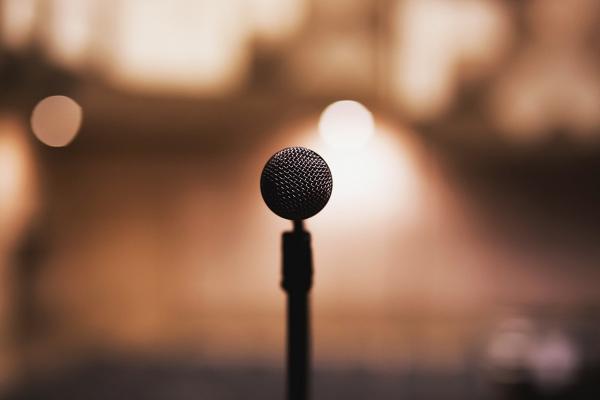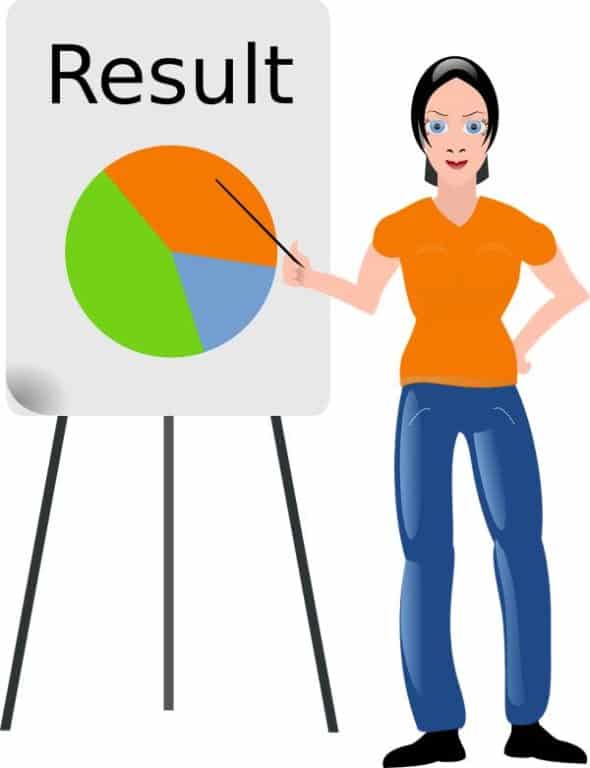The First Step to Conduct a Rhetorical Analysis
Our world today is filled with a plethora of information. This is usually presented in several ways; in writing, verbally, through paintings, sketches, movies, etc.
Various media outlets (television, news posts, WhatsApp, Twitter, telegram, youtube, etc) exist where this information is displayed and digested by its producers and consumers.
In this article, we will be looking at the first step of the technique to judge any information shared in writing and speeches, which is known as rhetorical analysis.
What is The First Step of Rhetorical Analysis?
Rhetorical analysis is conducted to understand better the information, intention and emotional state of the author or orator. Therefore, Reading or listening is actually the first step in conducting a rhetorical analysis.
You will have to determine the primary concept of the author’s argument by carefully reading the article(s) or literary work(s), listening to any speech made, or observing any piece of artwork you have.
After this, a second reading, listening, or observation is done again, but this time focusing on the author’s rhetorical devices.
What is a Rhetorical Analysis (Rhetorical Criticism)?
Understanding rhetoric and rhetorical analysis will help you become more astute with the information you encounter on a daily basis.
A rhetorical analysis is a form of essay but differs in that it examines a text from the standpoint of rhetoric. This means it focuses on how the author says what they say: their goals, strategies, and audience appeals. A rhetorical analysis follows the same format as other essays.
To develop an argument about communication, a rhetorical analysis evaluates all parts of the rhetorical situation, which include:
- The audience,
- Purpose,
- Medium, and
- The context within which it was made and presented.
An excellent rhetorical analysis explains, examines, and evaluates the text. The evaluation carried out represents your argument, which is usually done in three phases: ( we will use a text as an example).
Description:
What does the text appear to be like? What website was used to find the text? Who paid for it? What kind of rhetorical appeals are there? When was it written?
Analysis:
After the description, you will have to do the following analysis-Why does the author use rhetorical appeals in this way? What would be the reaction to a certain paragraph if it were written now rather than later- say two decades ago? What could be missing from the text, and why is it missing?
Evaluation:
The next thing to do is to evaluate. Is the text effective? and if so, how effective is it? Is the text morally sound? What would you modify to make a paragraph or the whole text more persuasive?
Highly Recommended Articles:
How to Analyze a Speech? The I Have a Dream Speech Analysis
The 7 Essential Components of Speech Communication
What are the Four Components of Rhetoric Analysis?
1. The audience for whom the piece is intended
Depending on the media, they could be readers, spectators, listeners, or viewers. Then, draw conclusions about this audience and their backgrounds, e.g., education, religion, age group, political inclinations, culture, etc.
2. The speaker’s goal
The speaker’s goal(s) is the second device to look at. What do they hope to achieve or what do they want to achieve and why do they want to achieve it? What exactly are they attempting to persuade their audience of?
3. The medium in which the message is delivered.
The medium through which they choose to present their message is also important. This could be through writing, painting, movies, photos, music, shows, or other mediums.
4. The original context.
Last but not least is to get an understanding of the setting. This includes the time, place, and social atmosphere. Was there anything else going on at the time?
What is the Importance of Rhetorical Analysis?
The importance of rhetorical analysis cannot be over-emphasized in the twenty-first-century world where we have several media (Twitter, Facebook, Youtube, radio, television, Instagram, etc) outlets of sending out information where it can be digested.
Since information is sent out in convincing ways to its audience in writing, speaking, images, and other forms of art, it is necessary to use rhetorical analysis to choose how to respond or consume any given piece of information. Let us look at where rhetorical analysis can be most important.
1) The Media
The media is one of the most essential places for this type of study. Consider all of the media we encounter daily, such as Twitter, television programs, radios, books, newsletters, websites, billboards, text messages, and all the rest! What makes media work is rhetoric, using language and images to convince others.
Through these various ways, we are continually pressured to buy something, act in a certain way, believe in something, or engage with others in a certain way in the name of fashion. Understanding rhetorical communications is essential for becoming informed consumers. Still, it also aids in evaluating the ethics of messages and how they affect us personally and the society in which we live.
2) Rhetoric as a Tool for Social Persuasion
This is arguably the second most important of rhetorical analysis. When we interact with others and the media, we always produce and interpret rhetoric. You create communications in the same way you determine how to interpret, analyze, or dismiss them.
Before you decide to accept or deny anything, either partially or wholly, you must have done rhetoric. For example, when you’re getting ready for a school interview or a contract, you’re undoubtedly thinking about what your behavior may mean, your appearance may say of you.

What are the 9 Tips in Conducting a Good Rhetorical Analysis?
Although numerous tactics can be applied in becoming a rhetorical expert, a few key ones are simple to understand and apply. The secret is a mix of authenticity and technique. The techniques below can be used to make good rhetoric.
1. Cause your audience to reason
This can be done in two ways:
- Inductive reasoning. This reasoning should be based on a sufficient amount of researchable evidence. Here, you begin with a specific case or facts, leading to generalizations or conclusions from them.
- Deductive reasoning. It begins with a generalization and then narrows it to a specific case. As it is with inductive reasoning, the inference you start with should have a sufficient amount of researchable evidence.
As you proceed, your audience is able to flow along with you till the end.
2. Make a moral argument
Suppose you can present yourself as an ethical person with established competence in your subject as the author of an argument. In that case, you may automatically provide a foundation on which you and your reader can find common ground.
3. The use of general logic
It is believed that a logical appeal to reason can be the basis of persuasive arguments.
4. Use rhetorical tactics to your advantage
In the English-speaking world, persuasive arguments frequently include certain colloquial tactics, also known as figures of speech. To make your rhetoric good, you can find out such figures of speech and use them as often as possible.
5. Make an emotional connection
Humans are emotional beings, and emotion frequently triumphs over cold logic. So it will be advisable to establish this connection.
6. Avoid logical fallacies
This requires a thrilling framework that alternates between favorable and unfavorable appeals, as well as strong reasoning. This can be an effective way to manipulate an audience’s emotions, but it also carries the risk of allowing emotional language to take precedence over the logic at the heart of your argument.
7. Make use of syllogism
Syllogism is one of the most powerful local rhetorical methods. It involves making two statements that lead to a natural conclusion.
8. Coin a Good Conclusion
Many writers in the beginning stage are often taught to end their rhetorical analysis with the statement “in conclusion.” However, to distinguish your level, this phrase should be avoided. Some other important tips to note in your conclusion are stated below.
9. Proofread and Review your Analysis
After conducting your rhetorical analysis, the best thing to do is to proofread your work while paying attention to essential components such as grammar, spelling, word usage, and the flow of ideas. Make sure all of your ideas are logically connected. If you used transitions correctly and your paper is clear and concise, you are good to go.
-
Want to Stand Out? 15 Key Tips for an Awesome Presentation

Presentation skills are often taken for granted, and developing and practicing these skills will give you a huge advantage. There is nothing less engaging than a dispassionate speaker flipping through slides for a set amount of time. To stand out, follow these key steps and turn an okay presentation into an awesome one! The fifteen…
-
A 9-Step Practical Guide On How To Analyze A Speech – Speech Analysis of I have A Dream Speech as an Example

A speech, as we all know, is a vocal opinion of a speaker’s stand. Speeches are usually used as an effective tool for rallying support, conveying opinion, as well as influencing the thoughts of others (usually the audience) to accept or agree with the thoughts of the Speaker. For a speech to achieve its goal,…
-
5 QUICK TIPS ON HOW TO GIVE AN EFFECTIVE MOTIVATIONAL SPEECH

This post is part 3 of a series of posts that where we will be sharing with you quick tips on how to deliver all types of speech that we mentioned in our most-read post on this blog, 10 Types of Speeches. Instead of just telling you that there is a motivational speech or an…
Conclusion
A rhetorical analysis should not be mistaken for a summary where you simply assemble the author’s main points in a piece of writing, neither is it an argumentative essay, so you shouldn’t take sides. You should look at how the essay is put together and see if the individual components are good at presenting information and communicating the author’s goals.







